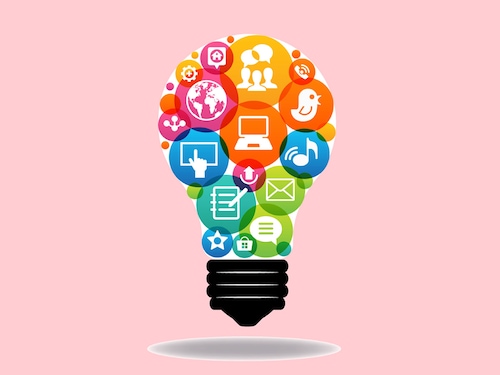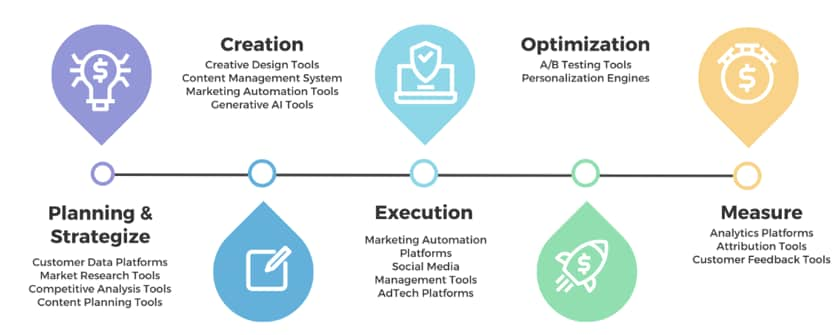How to leverage India's MarTech boom
As the country's digital footprint expands with over 850 million internet users, it will be exciting to see how marketers continue to innovate and bridge the diversity gap


Imagine this: you"ve just landed in Barcelona after a gruelling 24-hour flight. You"re exhausted, and all you want is to check into your hotel and rest for a while in those soft new fancy pyjamas you bought for this trip. But then, reality hits—you realise your baggage hasn"t arrived. Panicked, you rush to the airline authorities, and they assure you that your luggage will be delivered to your hotel... in two days. Frustrated, you turn to social media, venting your anger and tagging the airline. Within seconds, you receive a response. But instead of empathy, you"re greeted with the last two words you want to see right now. Any guesses? "Thank you for sharing your feedback."
Now, your frustration multiplies. The airline seems robotic and indifferent—completely out of touch with your situation. You might even vow never to fly with them again. So, what went wrong here? The airline relied on automated technology to send an instant response, but the message lacked context, empathy, and personalisation.
Could the airline have used smarter technologies to gauge your frustration and tailor a response using generative AI? Absolutely. And that"s exactly what we"ll explore in this article—how marketers, particularly in India, are adapting to MarTech. We delve into the unique challenges Indian marketers face, especially when bridging gaps arising from multiple cultures, languages, and geographies, and how technology can be a game-changer in delivering personalised, contextually relevant experiences.
MarTech, short for Marketing Technology, refers to the tools and software marketers use to plan, execute, and measure marketing campaigns. It encompasses everything from customer data platforms (CDPs) and email marketing tools to AI-driven content creation and automation platforms. MarTech enables marketers to streamline processes, personalise customer experiences, and optimise campaigns based on data-driven insights.
Scott Brinker, a thought leader in the MarTech space and editor of the ChiefMartec blog, popularised the concept through his MarTech Landscape supergraphic, which categorises over 14,000 marketing technologies across six broad groups:
While these thousands of technologies may seem overwhelming at first glance, marketers can navigate the MarTech adoption journey smoothly by following a simple framework. This involves choosing technologies based on the Marketing Activity Stages outlined below.

At each stage, marketers will come across multiple tools within each category. However, the choice depends on their short- and long-term marketing goals and the available resources—be it people or budget. Considering the end goal of a Marketer is to enhance Customer Experience and Increase Marketing ROI, the marketer first needs to assess where they currently stand across three key areas:
The MarTech industry is significant globally, with the US market alone valued at approximately $121.5 billion in 2022. In India, the MarTech market is estimated to be worth around $35 billion and is growing rapidly as businesses increasingly adopt technology-driven marketing strategies. However, the reality is more complex than it seems. Martech in India is like the new kid on the block—making waves but occasionally stumbling along the way.
While the late 1990s ushered in India"s digital age with a surge in internet and e-commerce growth, it wasn"t until the mid-2010s that MarTech tools began to gain traction. Businesses transitioned from old-school "spray and pray" media strategies to more sophisticated, data-driven approaches. The 2008 global financial crisis heightened the focus on ROI, and Indian companies quickly followed suit. The maturity of the IT sector and the explosion of smartphones and affordable data further accelerated MarTech"s rise.
A few use cases can help clarify how Indian marketers can navigate the MarTech landscape with flair and creativity.
MarTech has turned personalisation into an art form. Gone are the days of one-size-fits-all marketing. Now, it"s all about the "specially for you" experience. Marketers build detailed profiles by tracking every customer interaction—like a digital detective on a mission—to ensure that each customer"s journey is as smooth as possible. For example, platforms like Flipkart and Amazon India use web analytics technology to offer personalised product recommendations based on past purchases and browsing history.
Service has evolved significantly from snail mail to AI-powered chatbots, replacing wait times with lightning-fast responses. Remember the days when getting a reply took forever? It"s like having a customer service agent who is never on break. This has proved to be a big boon as human agents moved away from doing redundant tasks to solving real customer issues and developing innovative solutions. Companies like HDFC Bank have implemented AI-driven chatbots like EVA to provide 24/7 customer support, improving customer satisfaction and operational efficiency.
Today"s consumers have a front-row seat to detailed product descriptions, reviews, and comparisons. This transparency has pushed brands to up their game, ensuring return and refund policies are as clear as a sunny day in Rajasthan. Companies like Zomato and Swiggy showcase detailed reviews and ratings for restaurants by plugging in-app analytics and survey technology to easily gather consumer feedback, helping other consumers make informed decisions about where to dine.
With great data comes great responsibility. As marketers gather more data, the worry about privacy has grown. Consumers have begun monitoring for any misuse of their personal information, spurring a rush for better data protection and privacy measures. In response, FinTech companies and others have strengthened their data protection protocols to ensure customer data is handled securely.
Despite all the positives, MarTech adoption continues to be a work in progress. Indian marketers have been extremely cautious about adopting technology, and MarTech is no exception. This is because MarTech enjoys a direct linkage to Customer Experience, which in today"s age of social media has the potential to impact the company"s reputation. As we saw in the airline"s example at the beginning, from customers receiving any response at all from the airlines only during work hours to receiving an instantaneous response was a positive evolution. Still, because the element of sentiment analysis was missing, the automated response backfired.
India"s immense diversity—over 1,600 languages, numerous cultures, and various ethnicities—makes embracing MarTech a challenge. Consumer expectations vary widely across urban, rural, and regional lines. No brand can apply a one-size-fits-all strategy, and this complexity extends to MarTech solutions.
Indian marketers are tackling the vibrant diversity in languages, cuisines, cultures and consumer lifestyles with some impressive strategies:
Consumers love their local heroes they love content they can relate to, especially if it is in their own language. But what can a marketer do when there are simply too many languages? Let MarTech take over.
Marketers use Generative AI to craft content in multiple languages and dialects to connect with India"s myriad regional audiences. Here, gen AI helps marketers create content faster and enable personalisation at scale, and that too at the right time. It"s like speaking to each customer in their native tongue—whether from a bustling metro or a quiet village. For example, Cadbury leveraged AI to create hyper-localised advertisements for their "Not Just A Cadbury Ad" campaign. The AI-driven campaign allowed local businesses to generate personalised ads in multiple regional languages, promoting their products alongside the Cadbury brand.
Today"s customers are spoilt for choice. They spend hours binge-watching a new series on an OTT platform but are not willing to wait 15 seconds for an advertisement to pass, let alone watch irrelevant advertisements. Being relevant is the key, and personalisation enables this. But how do marketers ensure that they roll out personalised campaigns?
The answer is that digital platforms allow for laser-focused advertising. Marketers gain valuable insights into consumer trends and behaviours using technologies like CDPs, which analyse data from various sources. This ensures customer profile enrichment, which enables marketers to segment audiences based on location, language, and interests to ensure their ads are relevant. This level of precision means the customer is not getting ads for fancy international vacations when they are just looking for a local dinner spot. While Facebook and Google Ads have enabled Indian brands to run hyper-localised campaigns that resonate with specific regional audiences, Reliance Jio has used data-driven insights to target rural and semi-urban consumers, offering plans that meet their specific needs.
Today, customers expect every brand to talk to them as if it knows them individually, knows their preferences, likes, dislikes, etc. Segmentation, creating campaign content, and executing those campaigns all take time if done manually. The challenge for the marketer is creating those personalised campaigns at scale.
Technologies like CDPs with machine learning capabilities analyse consumer behaviour and preferences, enrich customer profiles, and append detailed persona attributes, enabling marketers to craft micro-segments that help fine-tune their strategies. Since manually creating such precise segments and personalising content is nearly impossible, marketers can use Gen AI for faster content creation and CDPs for segmentation, lookalike modelling, and hyper-personalisation, making running targeted campaigns at scale easier. This is like having a super-intelligent shopping assistant who knows exactly what your customers want before they do. Companies like Myntra leverage AI-driven recommendations to personalise the shopping experience for each customer, enhancing engagement and boosting sales.
India"s MarTech landscape is like a vibrant tapestry, constantly evolving and brimming with potential. As the country"s digital footprint expands with over 850 million internet users (second largest in the world, next to China), it will be exciting to see how marketers continue to innovate and bridge the diversity gap, turning challenges of diversity and variety into opportunities for deeper connections and growth.
Namrata is Director - Consulting & Customer Experience at FirstHive, a Customer Data Platform. Priya is Assistant Professor of Marketing at IIM Kozhikode. Aditya is Founder & CEO at FirstHive.
First Published: May 23, 2025, 14:34
Subscribe Now